|
Di seguito tutti gli interventi pubblicati sul sito, in ordine cronologico.
Researchers at Brigham and Women's Hospital and Harvard Medical School conducted a study comparing the psychoactive effects of Marinol (scientific name: dronabinol) – a THC pill used to treat nausea and weight loss in AIDS and cancer – with smoked marijuana.
Published in The Clinical Journal Of Pain, the team concluded that both forms of cannabis treatment have similar psychoactive effects.
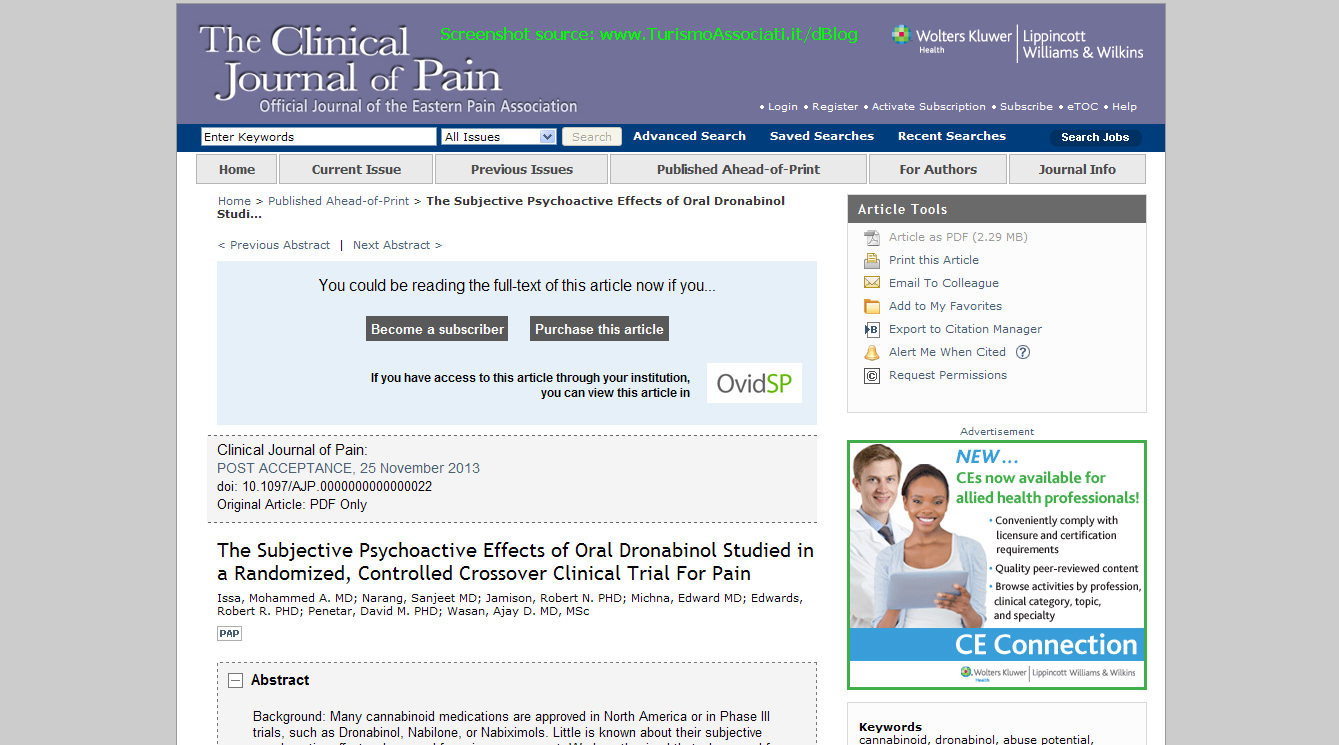
"These findings imply that in our laboratory environment, dronabinol caused a 'high' similar to smoking marijuana when used for pain management."
Marinol was given to a group of 30 chronic pain patients who were also on opioid therapy. Their measurements were compared with 20 healthy subjects who received marijuana in joint form.
The study involved three separate laboratory visits, where participants were given the drugs and asked to complete a self-rated assessment commonly used to measure psychoactivity.
Although psychoactivity scores came back the same, the researchers did notice a difference in the time it took for effects to peak. The effects of marijuana peaked after 30 minutes, while Marinol's peak happened at around 2 hours.
The researchers suggest that a delayed peak may make Marinol less abuse-prone than smoked marijuana.
On the other hand, medical marijuana can be administered in edible form, which many say offers a similar delay. A recent study also suggests that patients who've tried different forms of marijuana prefer the whole plant over pharmaceutical preparations.
Nevertheless, the authors believe that increasing interest in cannabis-based medicine warrants further research on its abuse potential.
The study received funding from the National Institute on Drug Abuse (NIDA) and Solvay Pharmaceuticals, Inc.
Source: LeafScience
Published last month in the open-access journal PeerJ, investigators at the University of Reading say the findings strengthen support for chemicals in marijuana as seizure treatments.
"These results provide the first molecular confirmation of behaviourally observed effects of the non-psychoactive, anticonvulsant cannabinoid, CBDV, upon chemically (pentylenetetrazole)-induced seizures and serve to underscore its suitability for clinical development."
CBD (cannabidiol) and CBDV (cannabidivarin) have both shown anti-seizure potential in animal studies, but human trials have so far only involved CBD.
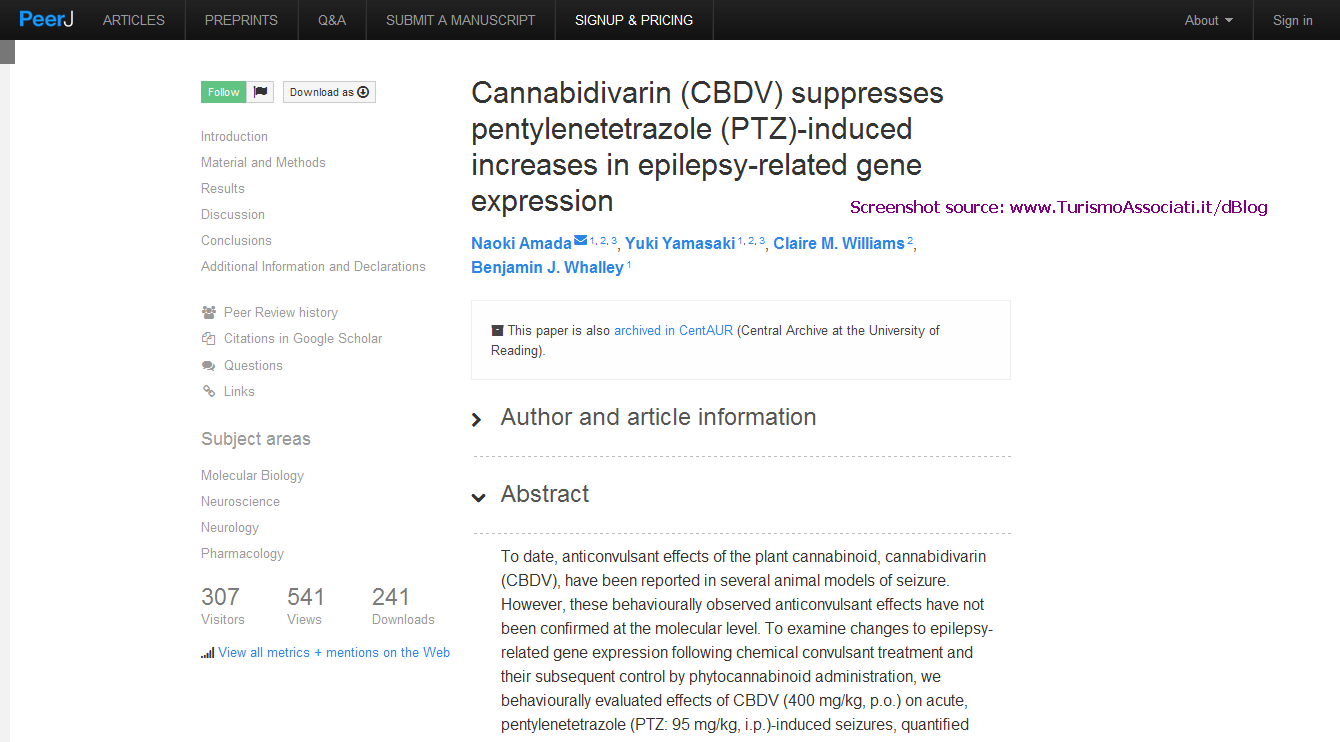
Using rat models, the researchers found that CBDV could suppress not only seizure activity, but the expression of specific epilepsy-related genes as well.
The team focused on a set of genes that are significantly increased in epilepsy and are thought to contribute to the disorder.
"Clear correlations between seizure severity and mRNA expression were observed for these genes in the majority of brain regions of CBDV + PTZ (pentylenetetrazole) treated animals and mRNA expression of these genes was suppressed in the majority of brain regions examined from the CBDV responder subgroup."
While the results can't confirm that gene suppression is directly responsible for CBDV's anti-seizure effect, the authors conclude that it provides "important acute biomarkers for additional investigation" of long-term treatment with CBDV.
The study was conducted as part of an ongoing epilepsy research project between GW Pharmaceuticals and Otsuka Pharmaceutical Co, Ltd.
Source: LeafScience
Aside Hollywood exaggerations, studies find that psichedelic drugs reduce stress and anxiety. if you think LSD and psilocybe mushrooms are bad, then everything you know is wrong.

The Big Picture with Thom Hartmann tackles the latest in political news, medical debates, commentary and more. From local, to national and international nothing will escape Thom Hartmann view.
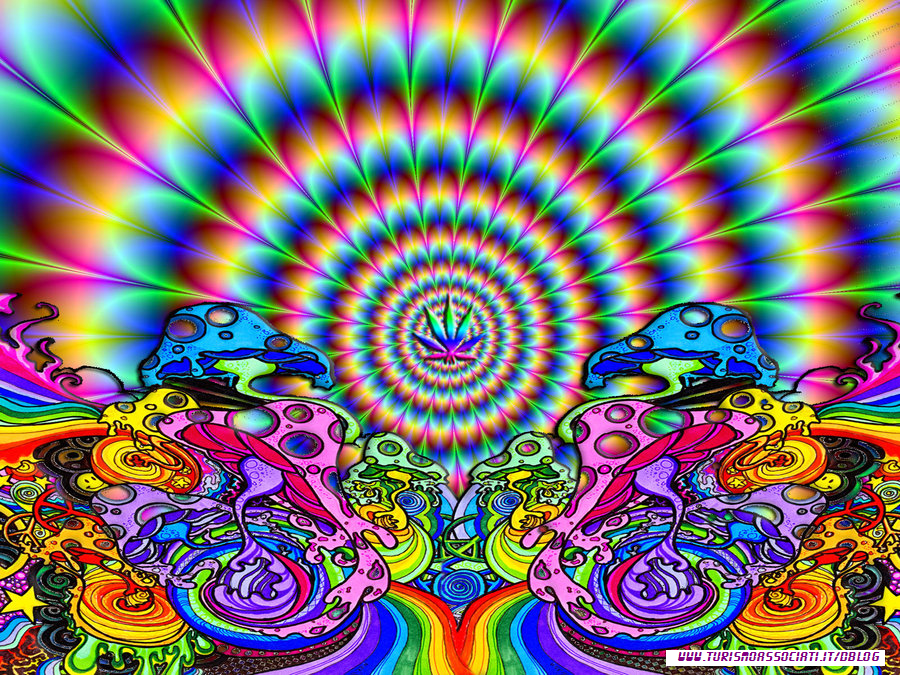
Thom Hartmann is a NY Times bestselling and 4-times project Censored winning author of over twenty books and America's #1 progressive radio host. His program is heard daily on hundreds of stations; including SiriusXM, DirectTV, Dish Network, Dial-Global, Pacifica, and Free Speech TV, broadcast live from the US and on five continents. Watch The Big Picture with Thom Hartmann on RT America weeknights at 7:00pm and 10:00pm Eastern Time.
)
RT interviews April Short, Associate Editor to AlterNet.
www.TurismoAssociati.it would like to thank Teus Vos for posting this video on our FaceBook channel-group.
Un subiect prea tabu, aceasta discutie despre femeile gravide si marijuana. Un "secret murdar" pentru femei, in special in primul trimestru chinuitor cand canabisul poate scuti femeia insarcinata de greata si stres.
Femeile insarcinate din Jamaica folosesc marijuana pentru a calma greata, precum si pentru a diminua stresul si depresia, de multe ori sub forma de ceai.

Un studiu efectuat in 1960 in Jamaica de catre studenta Melanie Dreher arata ca marijuana nu are nici un efect negativ asupra mamei sau a copilului, dimpotriva pareau sa exceleze. In cazul alcoolului sau a heroinei exista riscul de malformatii congenitale si probleme de dezvoltare insa nu si de la canabis.
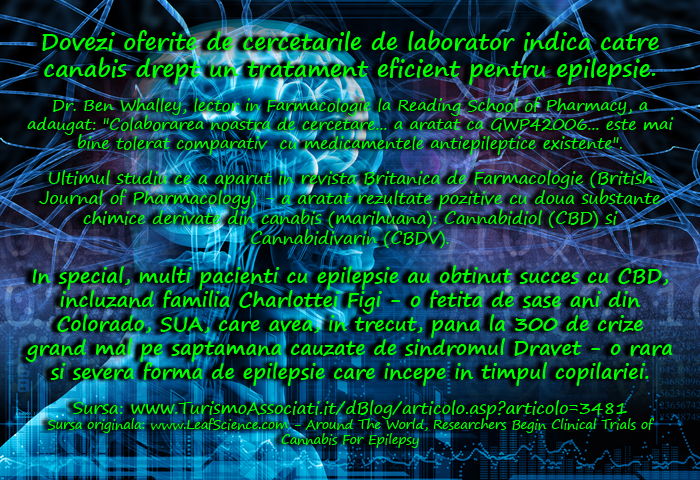
Cu toate ca acest studiu nu a fost "vazut bine" de catre autoritati, Dreher nu a lasat garda jos ci din contra a mers mai departe cu studiile pana a ajuns Decan la Universitatea Rush cu grade de asistenta medicala, antropologie si filozofie, plus un doctorat in antropologie la Universitatea Columbia.
"Chiar daca este ilegala, utilizarea marijuanei in scopuri medicale o voi sustine mereu, pentru ca stiu ce inseamna acest pur tratament".
Canabisul nu este daunator mamei si nici a copilului nenascut. Plus de asta, copii au fost supusi testelor pe perioada de pana la cinci ani dupa nastere si nu s-a raportat nici macar un caz de malformatii sau boli. Copii sunt perfect sanatosi, cu o capacitate mintala si fizica normala, incheie Dreher.
Sursa: ComunitateaProCannabis - Articol original: Study: The Effect of Cannabis on Pregnant Women and Their Newborns. A study of pregnant Jamaican mothers shows that ganja doesn’t harm newborns.
Researchers at the University of Nottingham conducted a meta-analysis of previous studies, reports the Nottingham Post, concluding that cannabinoids could reduce the severity of stroke as well as improve neurological outcomes.

Lead author Dr. Tim England, honorary consultant stroke physician at the University of Nottingham and Royal Derby Hospital, presented the findings at this week's annual UK Stroke Forum conference.
Dr. England explained in an university release that while research thus far has been limited to animals, the latest findings provide support for human studies.
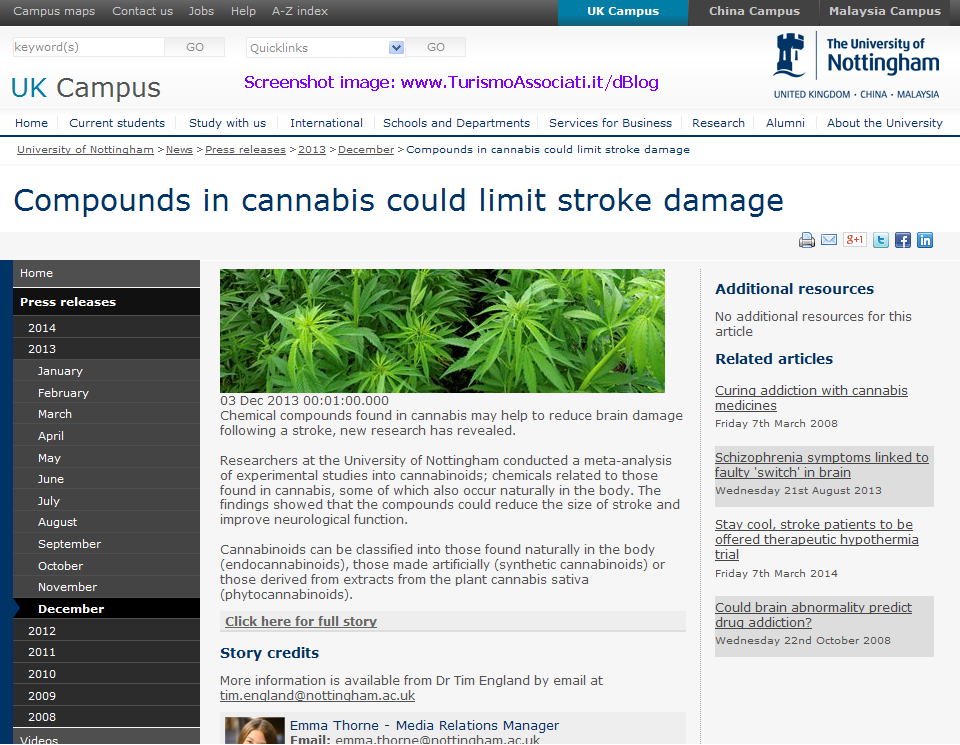
"This meta-analysis of pre-clinical stroke studies provides valuable information on the existing, and importantly, missing data on the use of cannabinoids as a potential treatment for stroke patients. The data are guiding the next steps in experimental stroke in order to be able to progress onto initial safety assessments in a clinical trial."
Dr. England and his team examined 94 past studies involving the effects of various cannabinoids on 1022 rats, mice or monkeys, reports The New Zealand Herald. The effects on stroke seemed to be consistent across all three types of cannabinoids: synthetic, marijuana-derived and those naturally produced by the body.
Dr. Dale Webb, director of research and information at the Stroke Association, also concluded that scientists should now aim to replicate the findings in humans.
"The findings have identified the potential for cannabinoids to reduce brain damage caused by stroke. Further research is needed to investigate whether cannabinoids have the same effects in humans: the effects of cannabis on the brain are highly complex and it remains a risky substance."
Following the presentation of the findings, Dr. Madina Kara, a neuroscientist at the Stroke Association, said that human trials are now "under discussion."
Source: NottinghamPost & NewZealandHerald via LeafScience
The issue is, despite marijuana being legal in over 20 states, only a handful have implemented measures to ensure product quality.
For instance, in California, laboratory testing is completely optional. And that's bad news, warns Jeffrey Raber, who holds a Ph.D in chemistry and runs a marijuana testing lab called The Werc Shop.
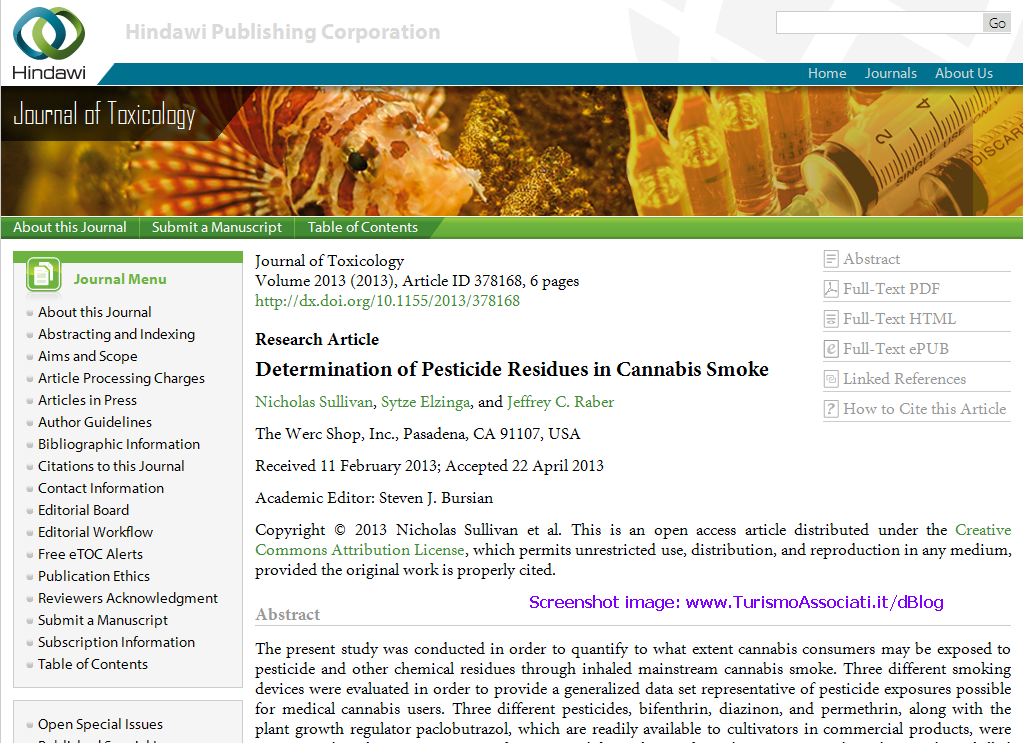
According to Dr. Raber, pesticides are present in about 10% of samples that are sent to The Werc Shop. While mandatory lab testing would be the ideal solution, Dr. Raber recently set out to determine just how much risk pesticides really pose.
His study, published in the Journal of Toxicology, shows that using a filtered smoking device can drastically reduce the conversion of pesticides into inhalable smoke.
Dr. Raber and his team used a McFinn's Triple Filtered Water Pipe for the study, which filters smoke through both cotton and carbon layers.
Unfiltered pipes and bongs, however, appear to offer far less protection against pesticides.
While research has yet to identify the specific health effects of smoking contaminated marijuana, Dr. Raber believes that patients with compromised immune systems are most at risk.
Source: Times-Standard via LeafScience
Using rat models of osteoarthritis, scientists at the University of Nottingham found that synthetic cannabinoids could relieve pain by interfering with signals at the spinal cord level.
The study, published last month in the open-access journal PLOS One, looked at specific marijuana pathways called CB2 receptors, which the authors note have "well described anti-inflammatory effects" when activated.
They conclude that cannabinoids which activate these pathways may hold promise in treating osteoarthritis, especially during early stages of the disease.
"Our clinical and pre-clinical data support the further investigation of the potential of CB2 receptor agonists for the treatment of pain associated with OA (osteoarthritis), in particular at earlier stages of the disease."
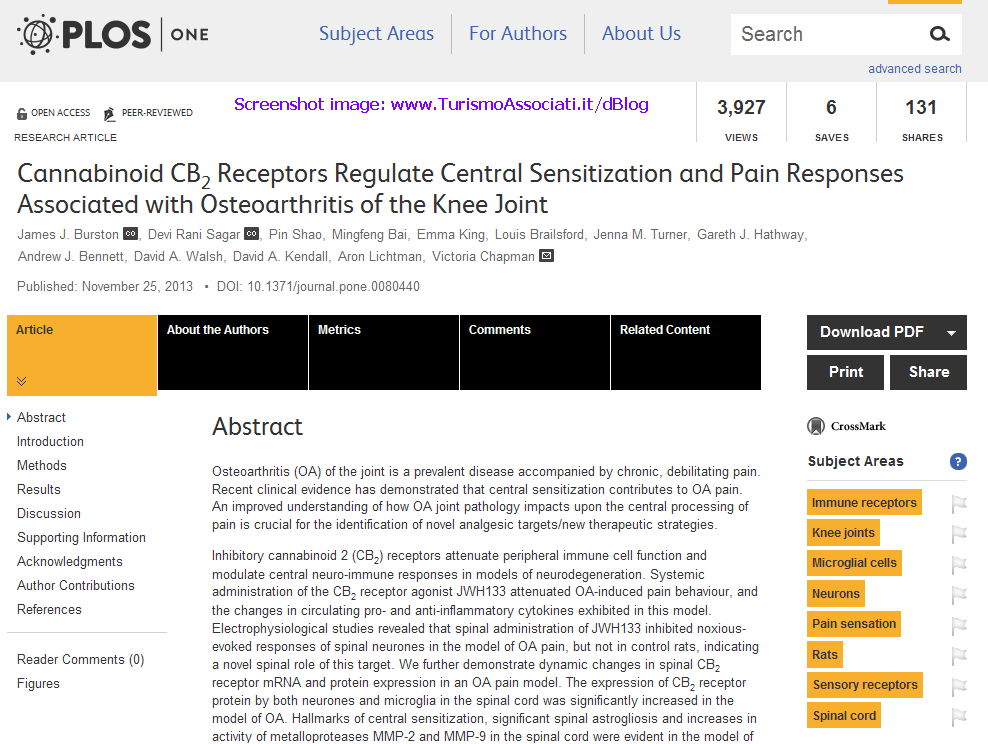
Interestingly, the scientists observed significant changes in the expression of cannabinoid pathways in tissue samples taken from both rats and humans with osteoarthritic joint damage, suggesting that the body naturally facilitates this mechanism of pain relief.
"We report the first evidence for the expression of CB2 mRNA in the human spinal cord, and demonstrate a negative correlation with joint chondropathy (damage). A positive correlation between the extent of chondropathy and pain has previously been reported, supporting the clinical utility of this approach."
Despite the lack of human trials, patients with arthritis have long reported marijuana to be helpful.
According to Jason J. McDougall, PhD, an Associate Professor of Pharmacology and Anaesthesia at Dalhousie University, who was not involved with the study, arthritis patients represent the largest group of Canadians using medical marijuana for any specific condition.
Statistics from Health Canada and the Canadian Consortium for the Investigation of Cannabinoids (CCIC) show that 36% of medical marijuana patients in Canada use the drug to treat some form of arthritis.
Although researchers seem to be taking a special interest in synthetic cannabinoids, Dr. McDougall believes that natural cannabis also needs to be considered "as a way of managing pain effectively."
The study received funding from Arthritis Research U.K. and the National Institutes of Health (NIH)
Source: LeafScience
All substance addictions, including marijuana, are defined by guidelines set out in the Diagnostic and Statistical Manual of Mental Disorders (DSM-IV).
Even still, marijuana addiction, also known as cannabis dependence, is both widely debated and widely misunderstood.
Here are 4 myths about marijuana addiction that should've been debunked long ago.

Myth #1 – It's not addictive.
Despite what some may argue, marijuana use can qualify as an addiction under currently accepted medical guidelines.
Under the DSM-IV, marijuana addiction is defined according to general criteria for all types of substance dependence. Admittedly, the definition includes a range of scenarios and may be subjective at times.
But as one example: If you've ever, all at once, happened to experience (I) tolerance, (II) difficulty cutting back, and (III) spent "considerable time" trying to obtain marijuana, then you would've met the criteria for marijuana addiction. Withdrawal symptoms – such as insomnia, cravings and loss of appetite – can also be a sign of addiction.
Overall, a study conducted by NIDA researchers concluded that 9% of people who ever try marijuana will become addicted to it at some point.
Myth #2 – It's highly addictive.
9% might seem like a lot, but it really isn't when you consider the addiction potential of other popular substances: 15% for alcohol, 17% for cocaine, 23% for heroin and 32% for tobacco.
Not to mention, while some may experience difficulty when trying to quit marijuana, the withdrawal symptoms are nowhere near that of heroin or tobacco.
Indeed, it would be more accurate to say that marijuana is significantly less addictive than many recreational substances that are legal today.
Myth #3 – Teen addiction is soaring.
Marijuana addiction among teens is a major focus of debate, and is often cited as a reason to keep marijuana illegal.
There's two problems with this notion, however. For one, many of the most negative claims are also the most scientifically debatable, including statistics like '1 in 6 minors who try marijuana become addicted' and '60% of teenagers in rehab are marijuana addicts'.
Secondly, most agree that teenagers shouldn't be getting marijuana in the first place. Unfortunately, an illegally-run industry tends to make it easier for high school kids to get marijuana – yet harder for responsible adults.
Myth #4 – Addiction is always bad.
So marijuana isn't as addictive as it's made out to be, but is it even that harmful for those who are addicted?
Besides the lack of long-term health problems, frequent marijuana use can sometimes be an effective form of self-medication.
In fact, studies suggest that people with hard-to-identify conditions like ADHD and depression may treat themselves with a daily dose of marijuana, while at the same time mistaking it for a bad drug habit.
For those who realize marijuana's versatility as a medicine, there's perhaps only one thing that makes a daily marijuana habit different from a treatment regimen of prescription pills: One is legal, and the other is not.
Source: LeafScience
Perfino Fiorello ha detto la sua sulla marijuana terapeutica, rinfocolando un dibattito mai spento e di cui "Salute" si è già occupata. Per nostra fortuna, la "querelle" non è casereccia, ha una dimensione internazionale. E’ noto che alcuni paesi, come il Canada, l’Olanda e cinque stati Usa, hanno legalizzato l’uso terapeutico della cannabis. Al tempo stesso, dalla ricerca scientifica di base è recentemente emerso un dato di grandissimo interesse: la scoperta che recettori per la cannabis sono presenti non solo nel cervello e nel resto del sistema nervoso, ma anche nelle cellule immunitarie.

In alcuni ambiti di ricerca si respira un po’ la stessa aria di trent’anni fa, quando vennero scoperti i recettori per la morfina, evento da cui partì il disvelamento del sistema endogeno degli oppioidi. Anche i recettori per gli oppiodi, come quelli per la cannabis, stanno nel sistema nervoso e nel sistema immunitario e, come loro, fanno parte del sistema di controllo del dolore, dei meccanismi di regolazione immunitaria e di molto altro, ancora da precisare e da scoprire.
Dall’altra parte, c’è, forte, una resistenza dei clinici, soprattutto di farmacologi legati alla sperimentazione clinica, che sembra risentire di due fattori: la storica collocazione dell’"erba" per antonomasia, negli anni '60, nel campo delle droghe senza alcun effetto terapeutico (contraddicendo apertamente la storia medica millenaria della cannabis); l’assenza di interesse delle grandi case farmaceutiche, che operano per (lucrosi) brevetti su molecole di sintesi e non su piante o derivati di sostanze naturali.
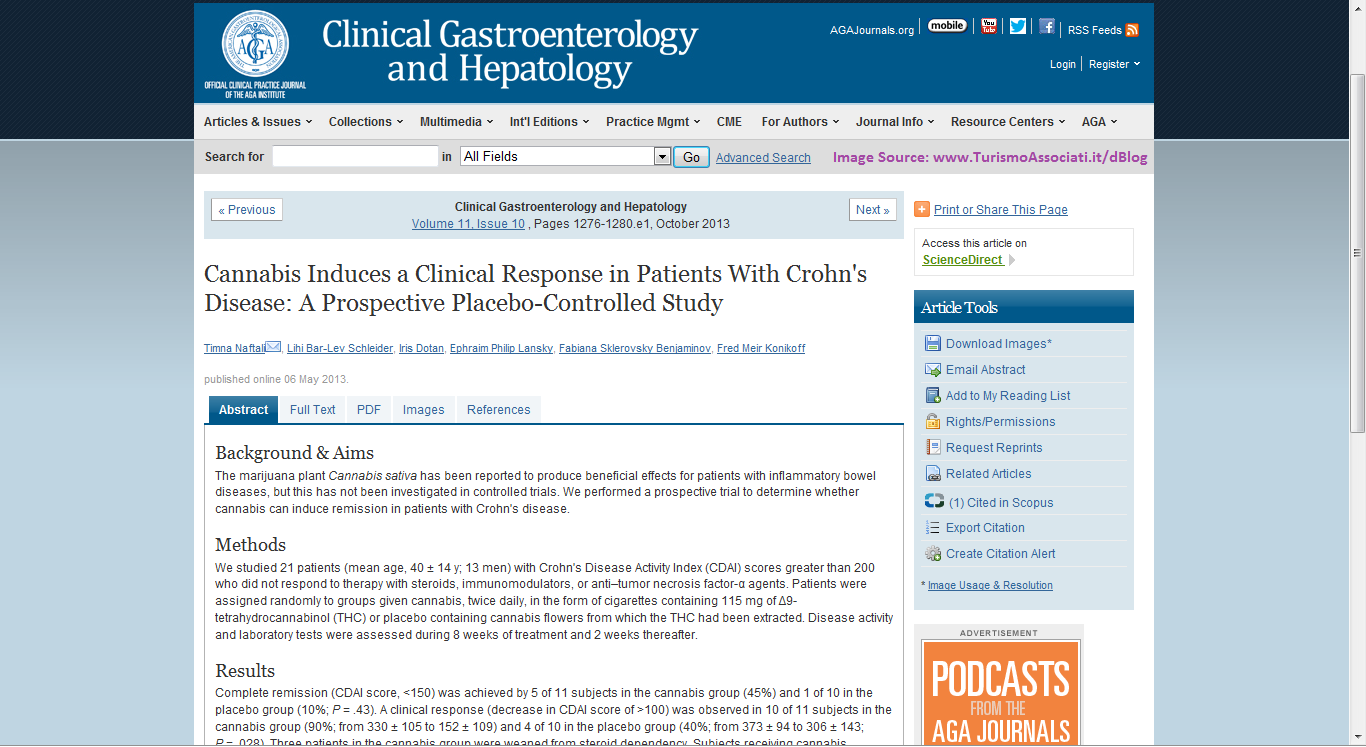
Si è storicamente instaurato, quindi, un pregiudizio che condiziona soprattutto la sperimentazione clinica, di cui importanti opinion leader si fanno portavoce. Resta il fatto che, a partire dagli anni '60, in tutto l’Occidente, gruppi di persone affette da patologie croniche (sclerosi multipla, artrite reumatoide, cancro) scarsamente trattabili, hanno ripetutamente segnalato di star meglio dopo aver fumato la famigerata "erba". Dolori, nausea, spasmi, mancanza di appetito, stanchezza, queste le indicazioni principali dell’erba, via via segnalate da rapporti medici pubblicati nelle più importanti riviste scientifiche. Poi, negli anni '80, i primi studi clinici controllati riguardo a nausea, vomito e dolori di varia natura.
Per la nausea e il vomito, la marijuana e il suo più antico derivato, il tetraidrocannabinolo (THC), sono risultati più efficaci e molto più sicuri dei farmaci antiemetici di allora. In trenta studi clinici controllati, su pazienti in chemioterapia, è emersa la superiorità antinausea dei cannabinoidi e, soprattutto, la preferenza di molti pazienti per l’uso di queste sostanze. Nessuno però, all’epoca, si è sognato di proporre la marijuana e derivati al posto dei farmaci in uso! Adesso, si sostiene che il nuovo farmaco antiemetico disponibile (Ondansetron), antagonista di un recettore della serotonina, ha risolto il problema, essendo più potente di canapa indiana e derivati.
Il che è vero, ma, se si tengono presenti le indicazioni delle società oncologiche, c’è un ampio spazio per la cannabis, in quanto l’Ondansetron è riservato alle chemioterapie pesanti, mentre per le situazioni medie si prevede cortisone e per le lievi niente. Così, nel caso del dolore, tutti gli studi controllati dicono che gli effetti della canapa indiana sono simili a quelli della codeina, ma suggeriscono anche che i derivati dell’erba siano molto più efficaci dei farmaci esistenti nelle neuropatie di tipo spastico. A ciò vanno aggiunti gli studi e le ricerche di base in corso in diversi paesi. Pare quindi molto utile proseguire la ricerca e la sperimentazione clinica su marijuana e derivati, per delimitarne livelli di efficacia ed effetti indesiderati. Al riguardo, rattrista la chiusura che emerge dalle dichiarazioni rilasciate dai nostri responsabili istituzionali e scientifici, anche perché, ancora una volta, rischiano di escludere il nostro paese dal giro della ricerca innovativa e, soprattutto, di approfondire il fossato tra bisogni delle persone malate, pluralità e flessibilità degli strumenti terapeutici e risposte istituzionali.
Fonte: Salute di Repubblica; Autore: Francesco Bottaccioli, Presidente della società italiana di Psiconeuroendocrinoimmunologia
Ceausescu garantase împrumuturile contractate de la Fondul Monetar International cu aurul Apusenilor! Ceea ce stim, e cã la Rosia Montanã se aflã zãcãminte foarte importante de arseniu, galiu, germaniu, molibden, titan, vanadium si mai ales wolfram, toate având aplicatii militare si industriale strategice. Wolframul, metalul cu punct de topire extrem de înalt, este folosit în industria aero-spatialã, dar si în ogivele nucleare. Wolframul se gãseste doar în douã locuri pe planetã: in Afganistan si în România, în Muntii Apuseni. În 1982, România atingea vârful de platã a datoriei de 11 miliarde USD cãtre FMI si avea nevoie de lichiditãti pentru a nu intra în incapacitate de platã. Conform contractului semnat cu FMI, incapacitatea de platã presupunea cedarea aurului din Apuseni, cu care România garantase împrumuturile.

Institutul de Prospectiuni si Foraje "Geofizica" aduce la cunostinta tovarasului Ceausescu cã în Apuseni, pe lângã aur se aflã si alte comori extrem de importante. Aflând acestea, Ceausescu ia o decizie care uimeste Planeta. În loc sã permitã FMI-ului începerea exploatãrii din Apuseni si de la Rosia Montana, Ceausescu plãteste pânã în 1985 întreg debitul de 11 miliarde de dolari americani. Eforturile întregii tãri au fost imense. Majoritatea produselor alimentare luau calea exportului, energia electricã era directionatã 99% spre productia industrialã, limitând astfel în multe cazuri accesul populatiei la iluminatul casnic. Efortul imens fãcut de popor în acele vremuri viza indirect salvarea zãcãmintelor din Muntii Apuseni, zãcaminte girate ca de altfel si astãzi FMI-ului. Plãtirea datoriilor înainte de termen a înfuriat rãu FMI-ul astfel cã am fost penalizati aspru prin aproape triplarea dobânzii de drept. Exact precum un cãmãtar fãrã scrupule FMI-ul a mai luat un rând de piele de pe noi, dându-ne un nou termen pentru luna martie 1989.

Noul termen de 4 ani a fost din nou devansat de Ceausescu, care cu ajutorul sacrificiilor imense fãcute de popor reuseste sã strângã suma totalã care ne elibera de absolut orice datorie cu un an mai devreme! Din 1988 Romania nu mai avea datorii si nu doar din martie 1989 cum unii trãdãtori încearcã sã modifice adevãrul, pentru a ascunde de fapt cele peste 18 miliarde avute în plus la momentul atacãrii României, miliarde a cãror urmã e îngropatã deocamdatã în filele dosarului BANCOREX. România era o masinã de fãcut bani, de fãcut valutã forte si nicidecum un morman de fier vechi cum a afirmat agentul strãin Petre Roman (fiul lui Valter Roman, nascut Ernest Neulander). Cele 18 miliarde avute în plus se constituiau din lichiditãti bancare sub formã de rezerve valutare, creante si sume aflate în curs de achitare ca urmare a exporturilor efectuate. De ciudã cã România nu mai are datorii ni s-a retras deîndatã de cãtre S.U.A. si Clauza Natiunii celei mai Favorizate.
Plusul imens de 18 miliarde U.S.D. a început sã producã modernizãri în industrie. UM Cugir spre exemplu a fost dotatã cu strunguri noi noute suedeze, strunguri dotate cu CNC (comandã numericã computerizatã). Inginerii de atunci au amânat schimbarea liniilor tehnologice pe diverse motive, iar dupã lovitura de stat din decembrie 1989 strungurile moderne, utilajele noi destinate retehnologizãrii, au rãmas la comandã tot în magazii. Nu numai la UM Cugir ci în întreaga tarã s-a dat stop punerii în functiune a utilajelor noi, deja achizitionate. Industria româneascã trebuia opritã. Utilajele noi, strunguri, freze, etc. au ajuns la fier vechi conform directivei date de strãinul Petre Roman, actualmente parlamentar PNL.
Fãrã a avea datorii majore, Ceausescu pune la cale un plan de exploatare al Apusenilor încã din 1985. FMI-ul înebuneste de-a dreptul, Soros la fel. Planul cu bãtaie lungã a lui Ceausescu le dã insomnii si palpitatii deoarece pânã în 2040 urmau sã se exploateze intensiv zãcãmintele de aur, argint si metale rare, ce urmau sã aducã României un profit evaluat în 2013 la nu mai putin de 400-500 miliarde de euro!!! Profit!!! Deja se întrecea orice mãsurã. România nu mai avea nevoie de nimic din afarã, îsi acoperea singurã necesarul intern, exporta masiv, si punea la cale împreunã cu China, Iranul si Libia, o replicã a FMI, prin BANCOREX. Pentru aceasta, Ceausescu trebuia condamnat la moarte prin împuscare si România condamnatã la jaf si sãrãcie! Care dintre dumneavoastrã n-ati strânge cureaua si nu ati agonisi bãnut cu bãnut timp de 8 ani pentru ca apoi sã trãiti 1000 de ani voi si neamul vostru în bogãtie si prosperitate?
Mai mult decât atât imaginati-vã ce sume s-au pus în joc de FMI, Soros sau altii lezati de independenta noastrã financiarã pentru a se cumpãra geologi (Gelu Voican Voiculescu a fost geolog la Rosia Montana pana la "Revolutie"), bancheri (Mugur Isarescu a fost economist la Institutul Bancar Mondial), economisti (Stolojan si Vacaroiu au fost colegi la Institutul National de Planificare Economicã) dar nu în ultim rând ingineri care sã amâne retehnologizarea, merceologi care sa deturneze fluxul de aprovizionare cu alimente, etc.? Aici a gresit tovarãsul, DEOARECE trãdarea a venit de lângã el. Dar asta-i altã poveste la care n-am cum sã nu revin atâta timp cât sunt în viatã. Am vãzut cu ochii mei scena teroristului prezentat la TVR1 pe data de 23 decembrie 1989, scenã care a scãpat de controlul regiei si care din neatentia cameramanului la surprins în continuare pe ofiterul care cicã l-ar fi prins pe asa zisul terorist cum îl felicita pe acesta!!!!!!!!!! BRAVO MÃI, hai cã te-ai descurcat bine au fost cuvintele de laudã ce au sincronizat surâsul smecheresc al acelui actor nenorocit! Am înregistrarea, am arãtat-o ca atare mai multor prieteni..., si, spre uimirea mea am primit doar rãspunsuri indiferente, ilogice si parcã din partea unora cãrora le-a fost sters creierul. Mã întreb cu sinceritate oare câti mai au procesorul mental intact si curajul de a-si apãra tara neofilit. Oare câti soldati mai are România? Ceausescu a demonstrat în timpul procesului - ilegal, cã a fost un conducãtor adevãrat ce nu face compromisuri nici chiar în fata mortii. Chiar si acum, dupã 24 SI CEVA DE ANI, Iliescu si ceilalti poartã-n suflet frica cã Ceausescu s-ar putea întoarce. Ei simt ceva si chiar au dreptate. Ceausescu e încã "viu" si istoria il va rãzbuna! Promit sã revin foarte curând cu noi informatii despre motivul secret (din nou Rosia Montana) al vizitei avute de Victoria Nuland (secretarul de stat American) la Palatul Cotroceni si despre posibila legãturã dintre cutremurul anuntat de aproape 1 an pe site-ul oficial al ambasadei S.U.A. din Bucuresti si nesupunerea României de a permite exploatarea zãcãmintelor din Apuseni dar nu numai! Pânã atunci vã sugerez sã cititi dacã nu stiti deja câte ceva despre tehnologiile HAARP, tehnologii capabile spun unii de declansarea cutremurelor, printre altele! Unele documente ale armatei americane arata lucrurile mult mai clar: HAARP are scopul de a descoperi metode de "exploatare" a ionosferei in folosul Departamentului de Aparare... da, interesant! Pe curand!
Ocroteste-i Doamne pe dusmani sã nu ne cunoascã mânia!
Sursa: circulă pe net via http://www.TurismoAssociati.it/dBlog
|